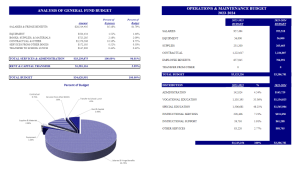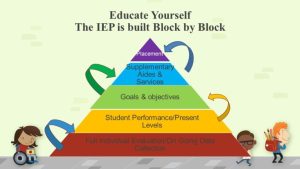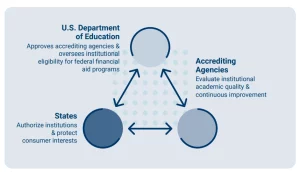Introduction
Beneath the William D. Ford Federal Direct Loan Initiative, the U.S. Department of Education (the Department) extends financial aid to students and parents to cover the expenses incurred in attending tertiary institutions. This section of the Federal Student Aid Handbook furnishes guidance to educational institutions in ascertaining the eligibility of students and parents for Direct Loans, advising student borrowers, and allocating Direct Loans. Expert personnel are on hand to deliver instruction in accordance with the curriculum and/or IEP within the student’s educational institution or domicile. These services encompass the coordination of the ER/RR/IEP process, IEP formulation, and/or facilitation of the transition back to the native school district or CAIU class placement.
Direct Educational Services and Itinerant COSERs

Itinerant Direct Educational Services serve as a mechanism for our collaborating educational institutions to furnish imperative student instruction and services that might otherwise pose a challenge. ONC BOCES engages and assigns itinerant educators in academic, artistic, and student support domains, along with relevant service providers, to educational institutions unable to justify a full-time position due to limited student enrollment. Itinerant educators and service providers cater to both the general student populace and those with disabilities. Here are the domains where ONC BOCES presently extends Itinerant Services to our partnering districts.
Understanding the IEP Process

Direct Educational Services It is paramount to grasp the procedural requisites to ensure the formulation of robust IEPs. Before embarking on this process, educators should acquaint themselves with fundamental aspects of pre-referral practices and the guiding ethos underpinning IDEA.
Direct Educational Services and Pre-Referral
Upon encountering learning or behavioral challenges in a student, educators initially ascertain whether adjustments to instruction or other facets of the learning milieu suffice to address them. This preliminary phase, known as the pre-referral process, entails a collaborative approach adopted by numerous educational institutions to aid classroom educators in implementing interventions for students grappling with academic or behavioral issues. For certain students, these minor modifications prove effective, obviating the need for further interventions. However, for others, the pre-referral process culminates in a formal referral for assessment for special educational services under Direct Educational Services.
Direct Educational Services in Compliance with Federal and State Regulations

Educational instruction is dispensed across various settings, including classrooms, homes, hospitals, and other environments. Moreover, 34 CFR § 300.115 delineates a Continuum of Alternative Placements, encompassing Instruction Conducted in the Home, which includes the alternative placements stipulated in the definition of special education pursuant to 34 CFR § 300.39 (instruction in regular classes, special classes, special schools, home instruction, and instruction in hospitals and institutions). Pennsylvania’s special education regulations, articulated in Title 22 PA Code Chapter 14, specifically § 14.102 Purposes, endorse the federal regulations pertaining to Instruction Conducted in the Home.
Direct Educational Services and Placement
Following an assessment, a local educational agency (LEA) is tasked with determining whether a student possesses a disability warranting tailored instruction via an IEP. According to 34 CFR § 300.306 (c)(2), upon confirming a child’s disability and need for special education and related services, an IEP must be formulated in accordance with §§ 300.320—300.324. Based on the IEP, the LEA must ascertain the educational placement offering the least restrictive environment. While the term “educational placement” remains undefined in the Individuals with Disabilities Education Act (IDEA) or its implementing regulations, 34 C.F.R. § 300.116 emphasizes the necessity for each public agency to ensure appropriate placements.
Instructional Constraints for Students
Instruction Conducted in the Home is reserved for students necessitating full-time special education services and programs beyond traditional schooling due to severe medical conditions or mobility impairments precluding attendance at school. Despite receiving instruction outside the conventional school setting, students placed under Instruction Conducted in the Home retain entitlement to a free appropriate public education (FAPE) commensurate with their non-disabled peers, unless such instruction jeopardizes their health or welfare.
Limitations of Home-Based Instruction
Home-based instruction proves unsuitable in scenarios where the LEA encounters challenges in arranging the requisite program or placement for a student. In such instances, the LEA must continue to fulfill the student’s requirements in accordance with their IEP while promptly seeking avenues to secure the necessary services. These measures may involve seeking assistance from the Pennsylvania Department of Education (PDE) or other agencies involved in child welfare.
Direct Educational Services and Homebound Instruction

A nonpublic school pupil rendered unable to attend classes due to physical, mental, or emotional ailments certified by a licensed physician qualifies for home or hospital instruction provided by a tutor appointed by the school district of residence. In cases of anticipated prolonged absence, typically exceeding two weeks, administrators of nonpublic schools are encouraged to liaise with parents regarding the feasibility of arranging homebound instruction. The duration of instruction should adhere to prescribed minimums, with weekly sessions lasting a minimum of five hours at the elementary level and ten hours at the secondary level. During the period of homebound instruction facilitated by the public school district, the district may seek state aid for the student.
Conclusion
A standardized format has been established for illustrative purposes, with examples numbered sequentially within Volume 8 for easy reference. Furthermore, examples have been streamlined by eschewing fictitious names of educational institutions and students.
Maintaining open communication between nonpublic school personnel and the district-employed tutor is imperative to ensure continuity of the pupil’s educational program. Nonpublic school administrators should furnish textbooks, materials, and pertinent records to the tutor at the onset of instruction. Upon conclusion of interim services, the tutor should furnish the nonpublic school with a comprehensive report detailing the pupil’s progress during the homebound instruction period.




